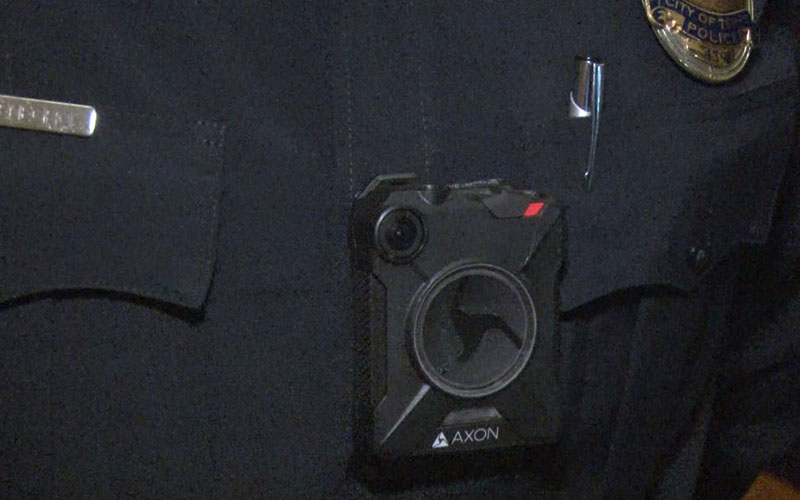
A national civil rights group said policies governing use of police body-warn cameras in 75 departments, including three in Arizona, present opportunities for abuse. But department officials criticized the report as riddled with errors and said they comply with all standards for camera use. (Photo by Natalie Tarangioli/Cronkite News)
WASHINGTON – Police department policies on the use of body-worn cameras, including policies of three Arizona departments, present the possibility for abuse of the technology, according to a report released this month by a national civil rights group.
In its third annual policy scorecard, the Leadership Conference on Civil and Human Rights said it looked at body camera policies to determine whether “police departments are conforming to these principles and adequately protecting civil rights and civil liberties.”
“We’re seeing a nationwide failure to safeguard civil rights, as departments adopt body-worn cameras,” said Sakira Cook, senior counsel for the Leadership Conference.
But Arizona police departments cited in the report blasted the study as “filled with inaccuracies” and based on standards that far exceed what the Justice Department requires.
“The Phoenix Police Department continues to be industry leaders in the use of body-worn camera technologies and policies,” Sgt. Jonathan W. Howard, a department spokesman, said in an emailed statement. “We work closely with the Department of Justice and the Bureau of Justice Assistance to ensure our policy is consistent with, and in fact leading, national standards.”
The report gave failing grades to Phoenix, Mesa and Tucson police for their policies. But they were in good company: None of the 75 departments studied complied with more than five of the eight standards in the report, and most met only two or three. Tucson met three, Mesa one and Phoenix none.
But Howard put little stock in the report, that he said contained “erroneous information.” As one example, he noted that the department’s policy on body-worn cameras is posted online, but the report claimed that it was not. Steve Berry of the Mesa Police Department said his agency is aware of the conference report but “we have not been contacted by their organization.”
The Arizona departments said they are working to hold the new and evolving technology to appropriate standards.
“Although camera programs have been around for several years, they are still very new in the realm of policy and best practices,” Berry said.
A spokeswoman for the federal Bureau of Justice Assistance said there is no one standard for the emerging technology, which is being adopted by more and more departments. But Joan LaRocca said her office assesses the use of cameras by agencies that get federal grants for the technology to make sure they “take steps towards developing policies that are deliberative, comprehensive, and that consider core policy issues.”
The conference report was based on eight safeguards developed by the organization. They include whether department policy allows officers to view footage before they file a report, whether an officer in the field has control of the camera when it is recording and whether the public can get access to video footage from the camera.
“There’s a real risk that these new devices could become instruments of injustice used, for example, to intensify disproportionate surveillance and disproportionate enforcement in heavily policed communities of color,” said Vanita Gupta, president and CEO of the Leadership Conference.
She and others said that one of the biggest problems is the possibility that officers can review the footage, which is why Gupta said a policy prohibiting that was “one of the most important benchmarks in our scorecard.”
While unrestricted officer access to footage may create “an illusion of accuracy,” the report said, it “actually undermines the goals of transparency and accountability.”
“No department is getting this one right,” Cook said. “Camera footage can be misleading. If an officer views the footage before filing his or her report, an opportunity will arise for the officer to conform the report to what the video appears to show rather than what he or she remembers.”
But Phoenix and Mesa police, who both failed on that score, both flatly denied that their policies allow officers to review video. Tucson police did not respond to requests for comment on the report.
“We do not allow officers to view BWC video prior to making statements following critical incidents,” Howard said.
But Gupta said that little has changed from previous reports.
“The unfortunate headline is that, like last year, there is still a nationwide failure on the part of police departments to honor people’s basic civil rights and privacy protections in the use of body-worn cameras,” she said.
“Ultimately we must recognize that body-worn cameras in and of themselves are not a panacea,” Gupta said. “These cameras are just a tool, not a substitute, for broader reform needed to address police misconduct, build trust between police and communities of color, and ultimately fix our broken justice system.”